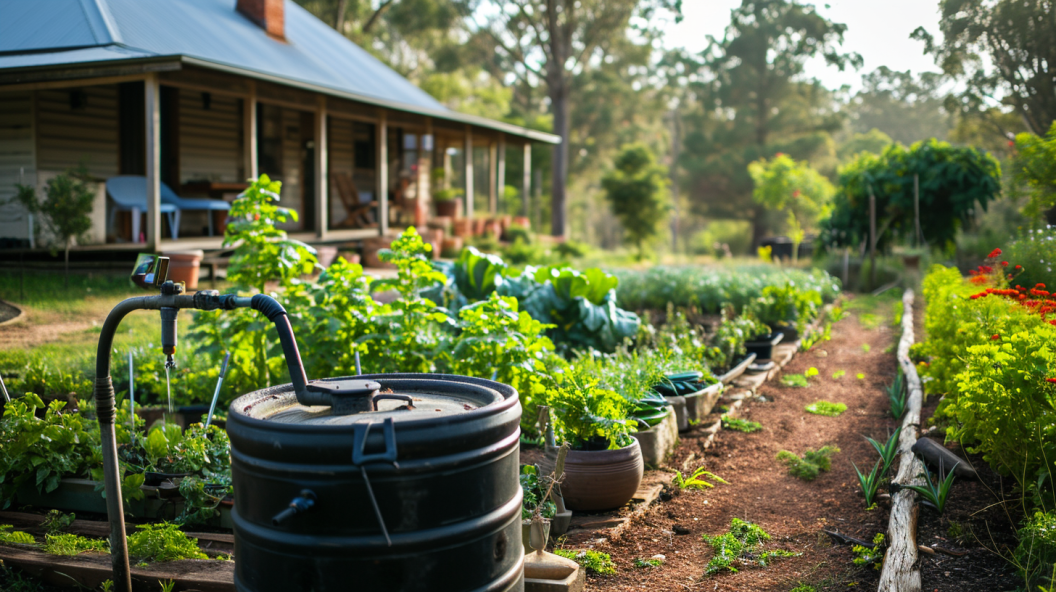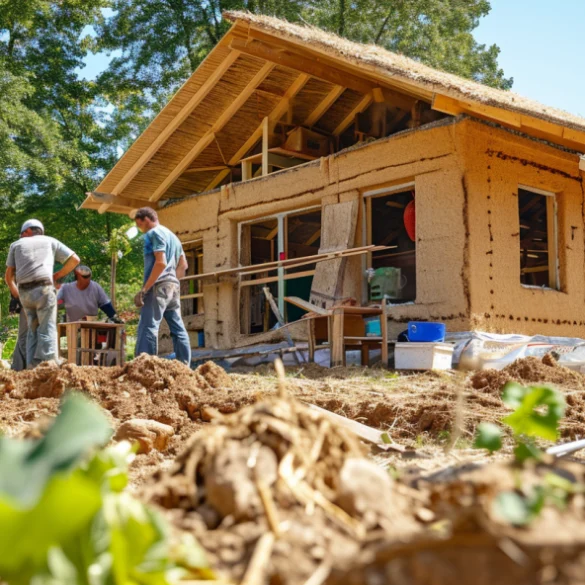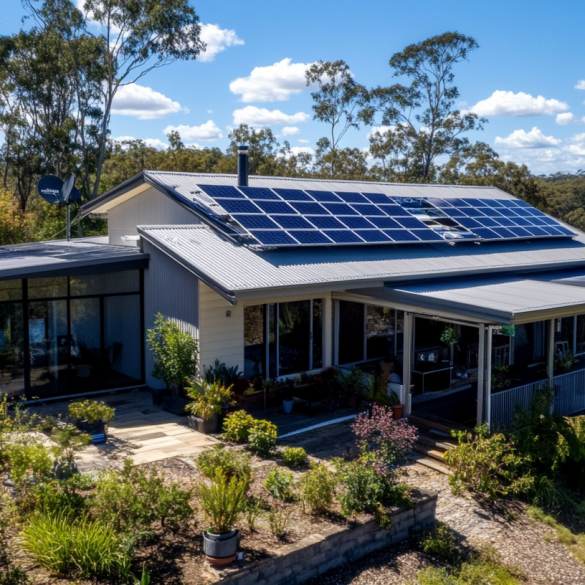Sustainable gardening embraces environmentally friendly principles and practices that help your landscape thrive without causing harm to the planet. These eco-friendly gardens support natural cycles, conserve resources like water and energy, avoid chemicals, and promote biodiversity. Sustainable gardens also provide fresh, homegrown produce while creating a beautiful habitat that attracts beneficial wildlife like pollinators, birds, and insects.
Table of Contents
What is Sustainable Gardening?
Sustainable gardening aims to work with nature, not against it. The goal is to create productive and vibrant gardens using methods that nurture ecological balance. This means building healthy soil, efficiently using resources like water, reducing reliance on chemicals, and selecting appropriate plants.
Some key principles that underpin sustainable gardening practices include:
- Working with natural cycles: Designing landscapes suited to local climate, rainfall, soils, and native plants. Using materials found on-site as much as possible.
- Conserving resources: Minimizing water usage through rainwater harvesting and drought-resistant plantings. Avoid pesticides and artificial fertilizers that can harm water quality.
- Reusing and recycling: Composting yard and food waste to enrich soil. Propagating plants from seeds and cuttings instead of buying new ones. Using recycled building materials where possible.
- Supporting nature: Providing habitat to attract pollinators and beneficial insects that control pests and support biodiversity. Designing for lifecycles – e.g. including plants for pollinators in spring through fall.
- Balancing needs: Grouping plants by sunlight and irrigation needs for targeted watering. Using groundcovers and mulch to suppress weeds. Integrating edible and ornamental plants.
Native plant landscaping, drought-tolerant vegetable gardens, pollinator-friendly herbs, fruit tree cultivation, and other sustainable gardening elements all support these key principles. The overall aim is to create environmentally regenerative landscapes – giving back to nature rather than just taking from it.
John at Sustainable home magazine
Why Choose Sustainable Gardening?
Adopting sustainable gardening practices provides many benefits, both for your landscape and the wider environment:
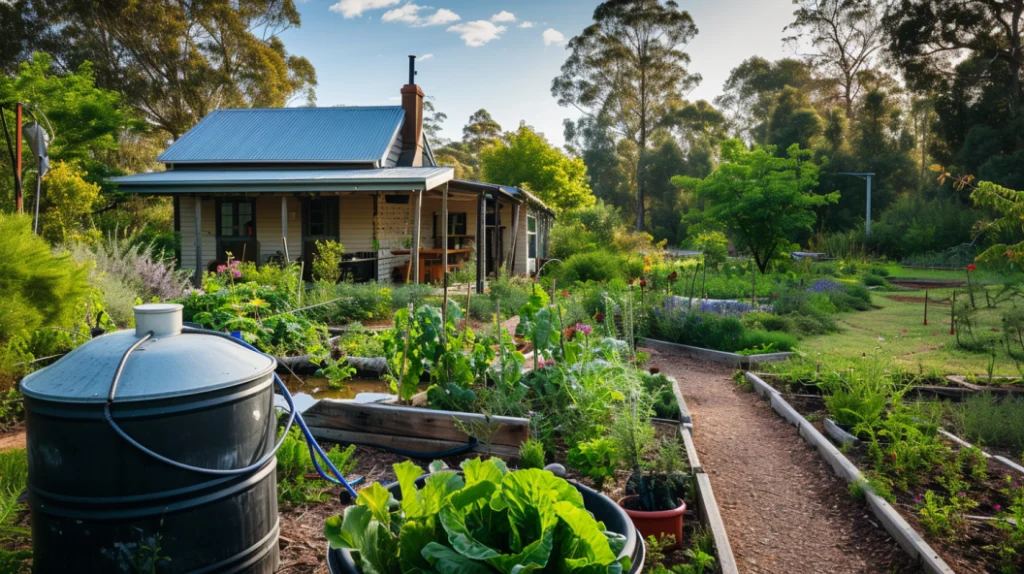
1. Protects Natural Ecosystems
Sustainable gardens help safeguard water quality, soils, wildlife habitats, and other critical ecosystems by avoiding harmful chemicals and embracing natural pest control methods like integrated pest management (IPM), beneficial insects, and crop rotation. Supporting biodiversity also strengthens the web of life that sustains productive gardens.
2. Conserves Scarce Resources with Sustainable gardening
Using water-efficient irrigation like drip systems, planting drought-tolerant varieties, and collecting rainwater helps reduce water usage. Similarly, avoiding pesticides and artificial fertilizers cuts back on fossil fuels used in manufacturing and transporting these chemicals. Resources like water and energy are conserved.
3. Mitigates Climate Change
Studies show that home gardens can play a measurable role in drawing down and sequestering carbon from the atmosphere, helping to mitigate climate change. Supporting plant growth, building healthy soils, and avoiding chemical inputs are key elements of this carbon capture process.
4. Provides Healthy, Fresh Food
Growing your own organic fruits, vegetables and herbs avoids the carbon footprint of long distance transport and ensures you know exactly how your food was grown. Homegrown produce harvested at its peak offers superior nutrition and flavor compared to store-bought alternatives.
5. Saves Money
While sustainable gardens require some upfront investment and effort, over time they save money by drastically cutting water and energy bills, avoiding purchasing chemical pesticides/fertilizers, and providing an abundance of fresh, organic food.
6. Creates Natural Habitat with Sustainable gardening
By providing diverse plants, water sources and shelter options you can attract and support a wide range of beneficial wildlife from beautiful butterflies to helpful predators that keep pests in check. Creating habitat is key for all kinds of species, from diminishing bees to migratory songbirds.
7. Improves Wellbeing
Numerous studies highlight the mental and physical health benefits of gardening and being in nature, from reduced stress and anxiety to increased life satisfaction and cardiovascular fitness. Growing healthy food and flowers also supports self-reliance and community building.
8. Sustainable Gardening Educates and Inspires
Sustainable gardening offers living examples of environmentally friendly practices, demonstrating how to work with rather than against natural systems. They can inspire others in your community to adopt more earth-friendly practices. Gardens also provide hands-on opportunities for children to learn about nature, food systems and conservation.
Sustainable gardening techniques offer multiple advantages – protecting the planet while providing abundant harvests. As environmental challenges like climate change and biodiversity loss grow, sustainable gardens represent regenerative solutions that support and restore nature’s balance.
Key Elements of Sustainable Gardening
Creating a flourishing, eco-friendly landscape requires integrating several sustainable features and practices. These key elements work synergistically to support productive gardens while conserving resources and nurturing natural cycles.
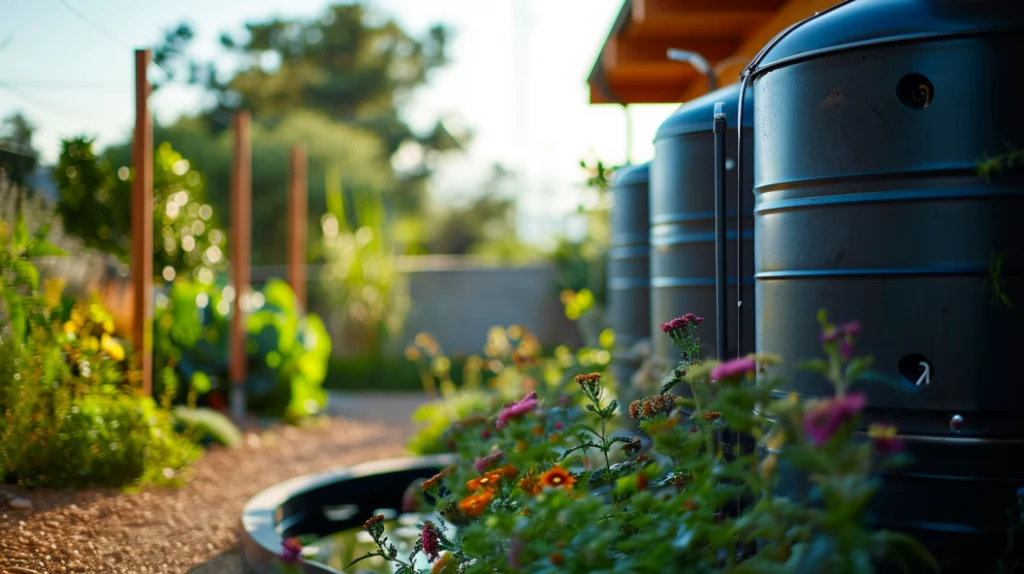
1. Water Conservation Strategies
As rainfall patterns shift and droughts intensify, water-wise gardening is essential for sustainability. Some effective techniques include:
Water-Efficient Landscaping: Choose native plants adapted to your region’s climate and rainfall patterns, along with drought-resistant varieties suited to xeriscaping methods that minimize irrigation needs.
Drip Irrigation: Target water exactly where it’s needed using efficient drip irrigation for gardens and flower beds. This avoids water loss from spray systems.
Mulching: Apply organic mulch like wood chips around plants to cool soil, block weeds and retain moisture so less watering is required.
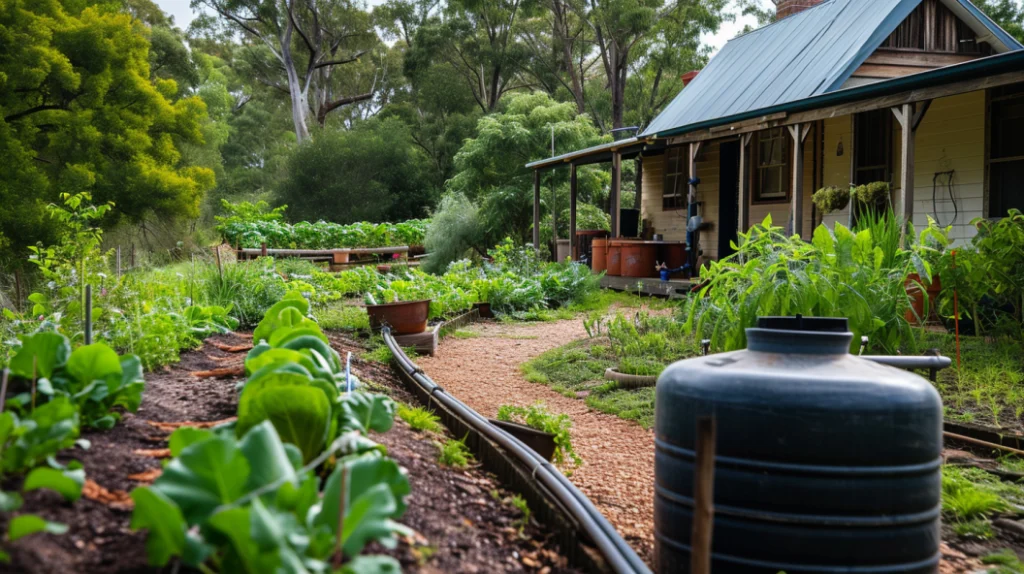
Rainwater Harvesting: Install systems to capture rainfall from roofs and store it in tanks, ponds or cisterns for garden use. This reduces reliance on municipal supplies.
Greywater Reuse: Pipe household wastewater from sinks, showers and washing machines to subsurface irrigation lines for non-edible plantings. Ensure greywater is distributed below mulch to avoid contact.
Permeable Hardscapes: Use pervious paving, gravel paths and wooden decks to allow rainfall to soak into the soil instead of running off the property. This also recharges groundwater.
Reducing reliance on thirsty lawns and ornamentals by replacing them with native plants, edibles and mulched beds makes space for more sustainable gardening elements while slashing water usage.
2. Cut Back on Fossil Fuel Use
Creating sustainable gardens means reducing the use of gas-powered tools and transportation associated with garden supplies. Some effective options include:
Electric Powered Tools and Equipment: Choose solar-charged electric mowers, trimmers, tillers, and other tools instead of their gas-guzzling counterparts. Electric tools are quieter, cleaner, and often more efficient.
Manual Tools: Use manual tools like hoses, rakes, pruners, and wheelbarrows for many tasks instead of power equipment. Manual labor provides exercise while avoiding fossil fuel energy.
Local Plant and Material Purchases: Buy plants, seeds, tools, and other garden supplies from local providers to reduce transportation emissions. Bonus – local native plants are adapted to perform well in your garden!
Renewable Energy: Harness solar, micro-wind, or small-scale hydro power on-site to help run pumps, electric fencing, lighting, and other garden infrastructure. This avoids considerable grid electricity usage over time.
Avoiding gas-powered lawn tools alone can cut fossil fuel usage and emissions dramatically. Pair this with energy efficiency, renewable power, and local sourcing for maximum effect.
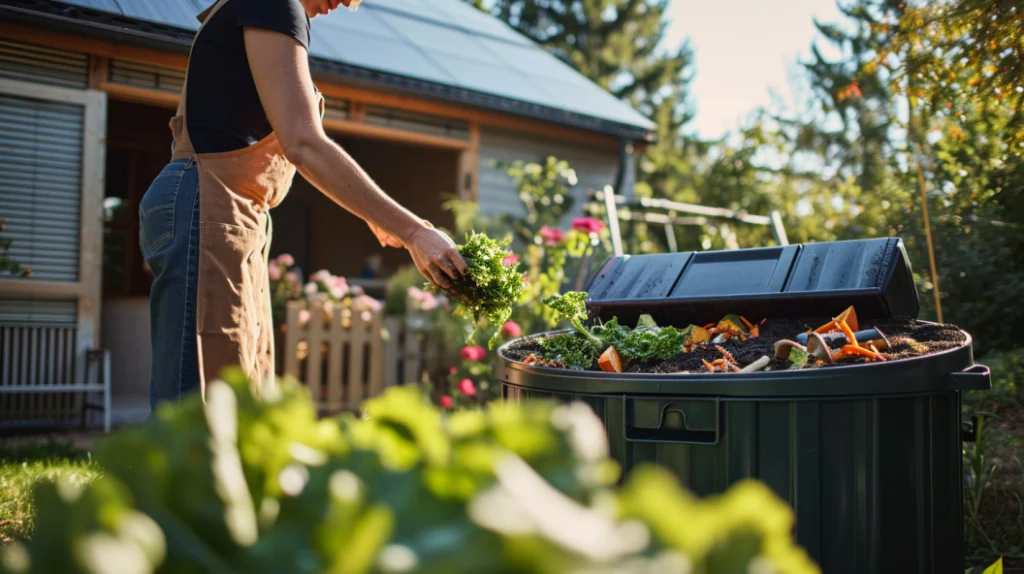
3. Reuse Garden Waste Sustainably
Instead of throwing away plant trimmings, fallen leaves and food waste, sustainable gardens recycle these valuable materials through composting. Some key methods include:
Home Composting: Use rodent-resistant enclosed bins to compost vegetation from garden beds and lawns along with fruit and vegetable food waste from your kitchen. This nutrient-rich material can be returned as organic compost to enrich beds.
Vermicomposting: Adding red wiggler worms speeds decomposition of food scraps into an ultra nutritious vermicompost or “worm castings” filled with microbial life. Their castings concentrate nutrients and minerals in plant-available forms.
Grasscycling: Use mulching mower blades to leave grass clippings on the lawn when mowing. The decomposing clippings return nitrogen and other nutrients back to the soil, reducing the need for fertilizers.
Backyard Composting: Pile yard waste like leaves and trimmings over fencing or in a three-bin turning system to produce free garden compost as it slowly breaks down. Layer “green” and “brown” materials for ideal conditions.
Closing the loop by returning organic materials to the soil sustains fertility while supporting beneficial soil microbes and valuable earthworms. This natural composting process supports plant health without relying on chemical fertilizers.
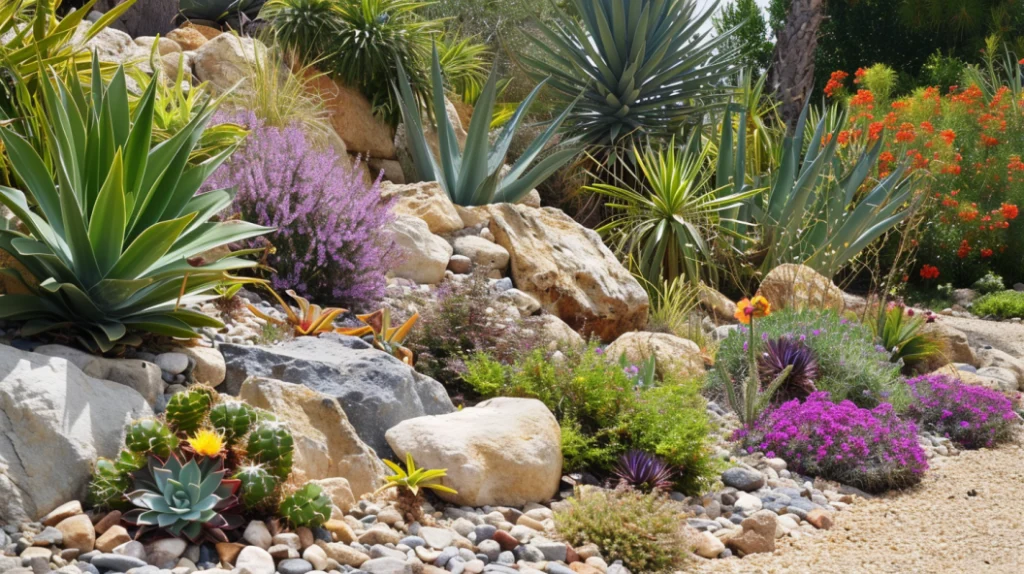
4. Sustainable Plant Selection
Choosing plant varieties suited to local growing conditions and priorities makes sustainable gardens easier to maintain. Some smart options include:
Native Plants: Select trees, shrubs, perennials, and grasses native to your region. These hardy plants are uniquely adapted to thrive without amendments, irrigation, or fertilization once established. Native plants also provide habitat and food to support local wildlife.
Edible Landscaping: Include fruit trees, berry bushes, vegetable gardens, culinary herbs, and edible flowers as ornamental elements of your landscape. This ensures a built-in source of organic produce while adding beauty and interest to the garden design.
Drought-Tolerant Varieties: For hot, arid climates choose cacti, agaves, sedums, sages, and other plants capable of thriving with minimal water. Group by irrigation needs to target watering efficiently.
Pollinator-Friendly Flowers: Grow vibrant native wildflowers, bee balm, cosmos, echinacea, and other flowering plants to nourish bees, butterflies, hummingbirds, and other critical pollinators.
Propagation: Take cuttings from existing plants or save seeds to propagate more plants for free instead of buying new ones. Share extras with gardening friends and neighbors.
Selecting plants suited to site conditions and gardening goals reduces maintenance needs while supporting natural biodiversity – core aims of sustainable gardening.
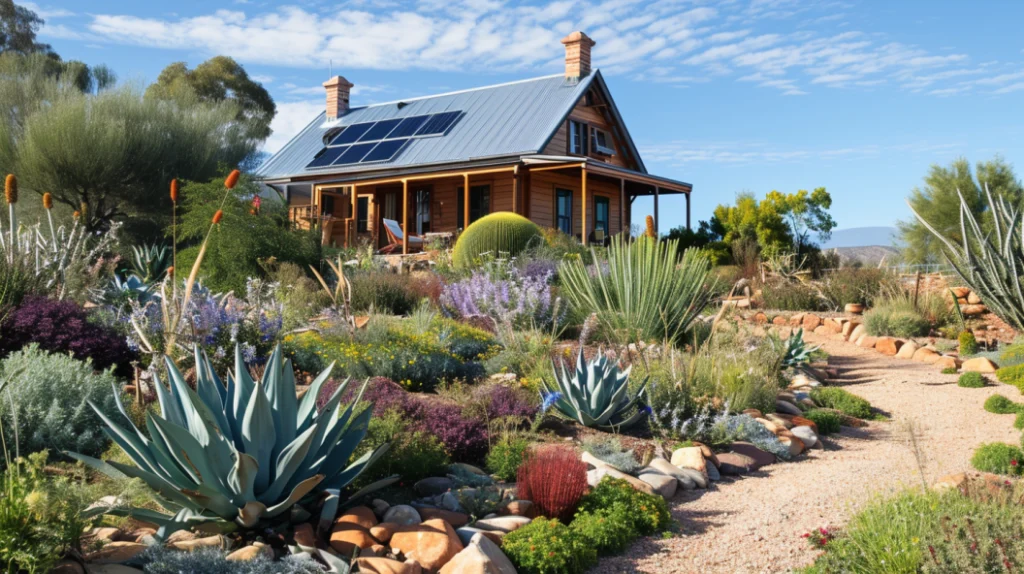
5. Mindful Garden Design for Sustainable Gardening
Thoughtful landscape design makes sustainable gardens beautiful as well as functional. Some key principles include:
Placement by Sun and Water Needs: Group plants with similar light and irrigation requirements together in the same beds and zones. For example, shade lovers under trees, drought-resistant plants on sunny slopes, and thirsty elements near water sources. This allows you to target soil enhancement and watering more efficiently.
Companion Planting: Intermingle plants that benefit each other, like pairing nitrogen-fixing beans with heavy-feeding corn. Include flowers to attract pollinators to fruiting crops. Trap crop radish lures pests away from vegetables. The right plant partners can strengthen resilience.
Edible and Ornamental Mix: Combine edibles like blueberry bushes, tomato vines, herbs, and hops among ornamental beds, borders, and containers for an integrated landscape. This ensures fresh ingredients are within easy reach while adding beauty and interest to the design.
Permeable Surfaces: Use wooden decking, gravel pathways, permeable paving, and stone steps to allow rainfall to soak into the soil. This reduces runoff while helping to recharge groundwater.
Thoughtful placement, plant combinations, and hardscaping create attractive, productive landscapes perfectly aligned with sustainable gardening goals.
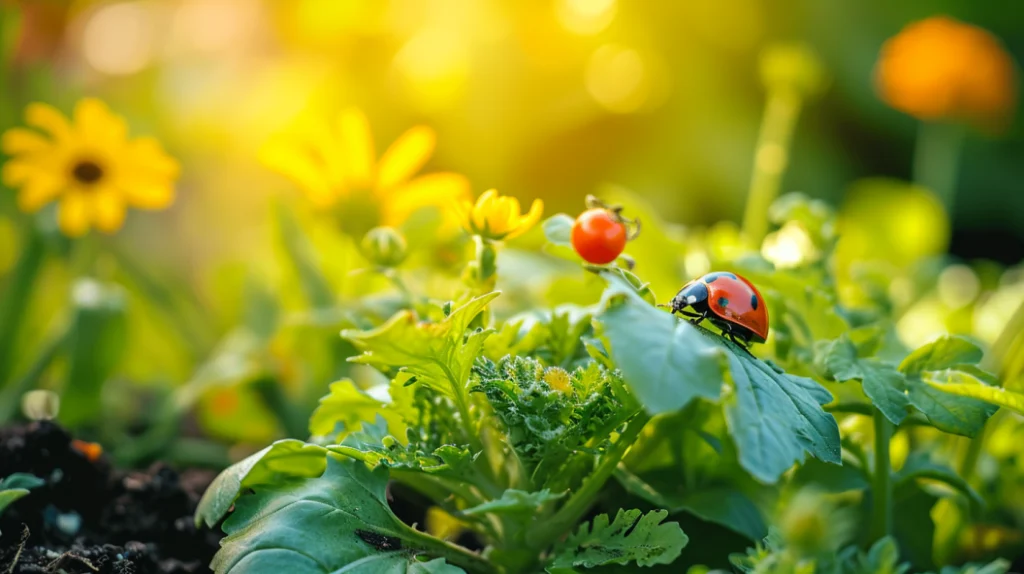
6. Natural Pest, Disease and Weed Control
Avoiding chemical controls protects soil and water quality while supporting biodiversity. Effective natural options include:
Beneficial Insects: Attract predatory ladybugs, lacewings, parasitic wasps, and other beneficial insects to naturally control pests like aphids without spraying. Plant varieties like dill, fennel, and cosmos provide the nectar these helpers need.
Integrated Pest Management (IPM): Use row covers, hand removal, and insecticidal soaps first when pests appear. Monitor for natural predators. If pest populations then cross threshold levels, spot treat with OMRI-listed insecticides derived from neem oil or spinosad products.
Companion Planting: Interplant species like basil (repels flies, and mosquitoes) and marigolds (deters nematodes) to protect vegetables from damaging pests. Include trap crops like nasturtiums that lure pests away from prized plants.
Crop Rotation: Shift plant families to different beds each season to disrupt pest and disease lifecycles. This avoids depleting specific nutrients and prevents some soil pathogens like fusarium or verticillium wilt.
Weed Prevention: Use dense plantings, mulch layers 5-6 inches deep, or landscaping fabric/newspapers topped with mulch to block light and prevent weeds from emerging. Spot treat weeds early and ensure removal of roots.
Using multiple natural tactics tailors sustainable solutions for controlling pests, diseases, and weeds without relying on toxic chemical pesticides. This protects wildlife while keeping your garden thriving.
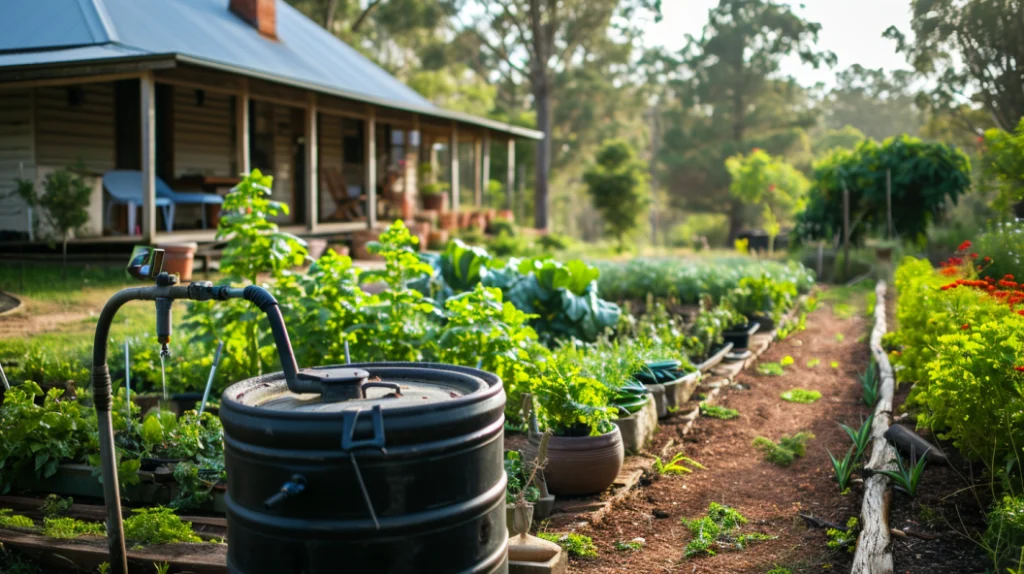
Bringing it All Together: Seven Ideas for Sustainable Garden Projects
Here are just a few possibilities for do-it-yourself garden projects perfectly aligned with sustainable practices:
- Edible Fruit Tree Area – Include a diverse mix of apple, pear, peach, plum, and cherry trees suited to your climate. Surround them with blueberry and raspberry bushes, plus strawberries at their feet. Use wood chip mulch, efficient irrigation, and interplant flowering herbs to attract pollinators.
- Pollinator Victory Garden – Convert lawn space into vibrant beds of native wildflowers, sunflowers, bee balm, and other flowering plants that provide nectar and pollen. Add hollow stems, rock piles, birdhouses, and a small pond for shelter and water. Avoid all pesticides.
- Backyard Wildlife Habitat – Whether a balcony container garden or sprawling landscape, provide food (native plants, fruiting shrubs), water (birdbath, pond), shelter (brush piles, bird houses), and places to raise young (dense shrubs, dead trees) to certify your space as wildlife friendly.
- Native Woodland Garden – Transform a shady section of the yard into a lush haven focused on native woodland wildflowers, ferns, and shade-loving shrubs. Use leaves as mulch, avoid chemicals, include bird habitat, and let nature lead regeneration.
- Pollinator Victory Garden – Convert lawn space into vibrant beds of native wildflowers, sunflowers, bee balm, and other flowering plants that provide nectar and pollen. Add hollow stems, rock piles, birdhouses, and a small pond for shelter and water. Avoid all pesticides.
- Rooftop Veggie Garden – Use container gardening, vertical growing systems, and raised planters to transform rooftop, balcony and patio spaces into abundant micro-farms. Focus on fast-growing, high-yield edibles you love to eat! Add compost bins, rain barrels, and renewable energy sources like solar panels.
- Backyard Orchard Meadow – Replace water-hungry lawn with native grasses and wildflowers, fruit trees, berry bushes and vine crops. Use cardboard/mulch to suppress grass during transition, enrich soil with compost, then sit back as birds, bees and butterflies flock to your sustainable Eden.
Let your site conditions, climate, interests and needs guide your own sustainable garden projects. The possibilities are endless!
Sustainable Home Magazine
Moving Forward with Sustainable Gardening
Working with natural systems creates landscapes that thrive for the long term while regenerating local ecosystems. As seasons and environmental conditions evolve, continually reassess your garden and adjust approaches to align with sustainable ideals.
Gardening sustainably often means a shift from high-input ornamental beds to an integrated mix of edibles, natives and habitat supporting biodiversity. It means celebrating self-sown veggies between pavers and embracing colorful insects that indicate balanced ecosystems. Nature will fill any niche in wonderfully creative ways – learn to nurture it.
Start small by adding a few new sustainable practices each season. Compost kitchen scraps, install a rain barrel, eliminate pesticide use, then build on your successes. Growing food, foliage and flowers using sustainable methods connects us viscerally to nature’s cycles of decay and regeneration that sustain all life. It fills gardens and hearts with meaning and brilliance.
There is always more to learn. For additional ideas or troubleshooting, connect with other local gardeners through community groups, native plant societies, permaculture meetups, master gardener talks or sustainable landscape tours. Embrace small failures along with victories as you refine your sustainable gardening practice.
The rewards – fresh organic food, wildlife spots, zen moments amidst buzzing pollinators, soil’s dark perfume after rain – continue to unfold as your garden matures. But most of all, sustainable gardens enrich because they enable us to nurture rather than harm, create rather than deplete, and give back rather than just take. They offer a living example of what it means to walk lightly and work towards harmony on this shared Earth.

